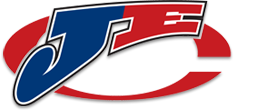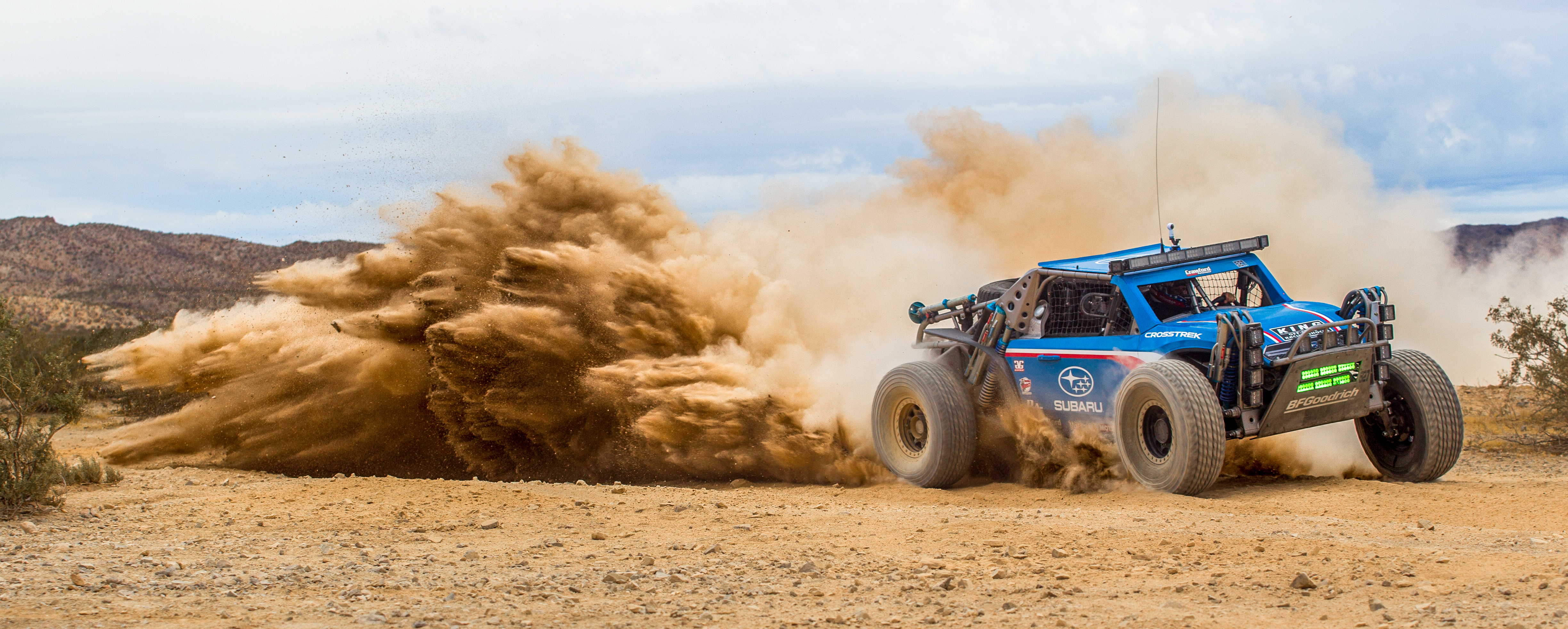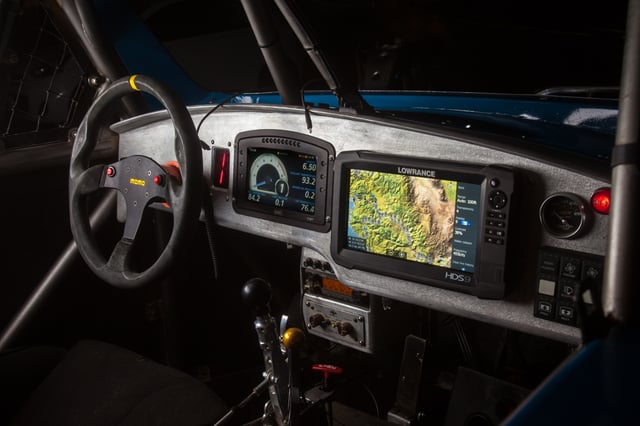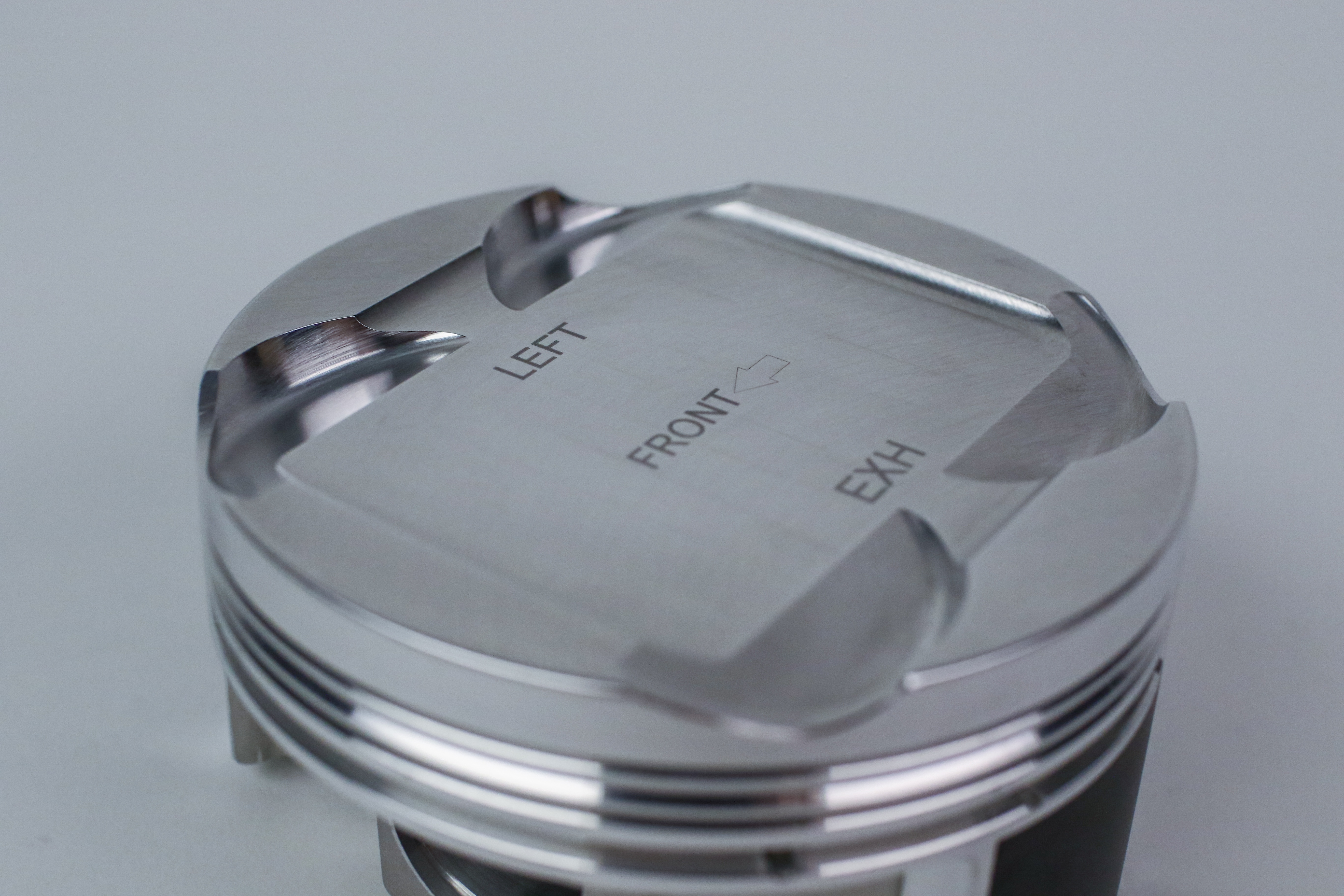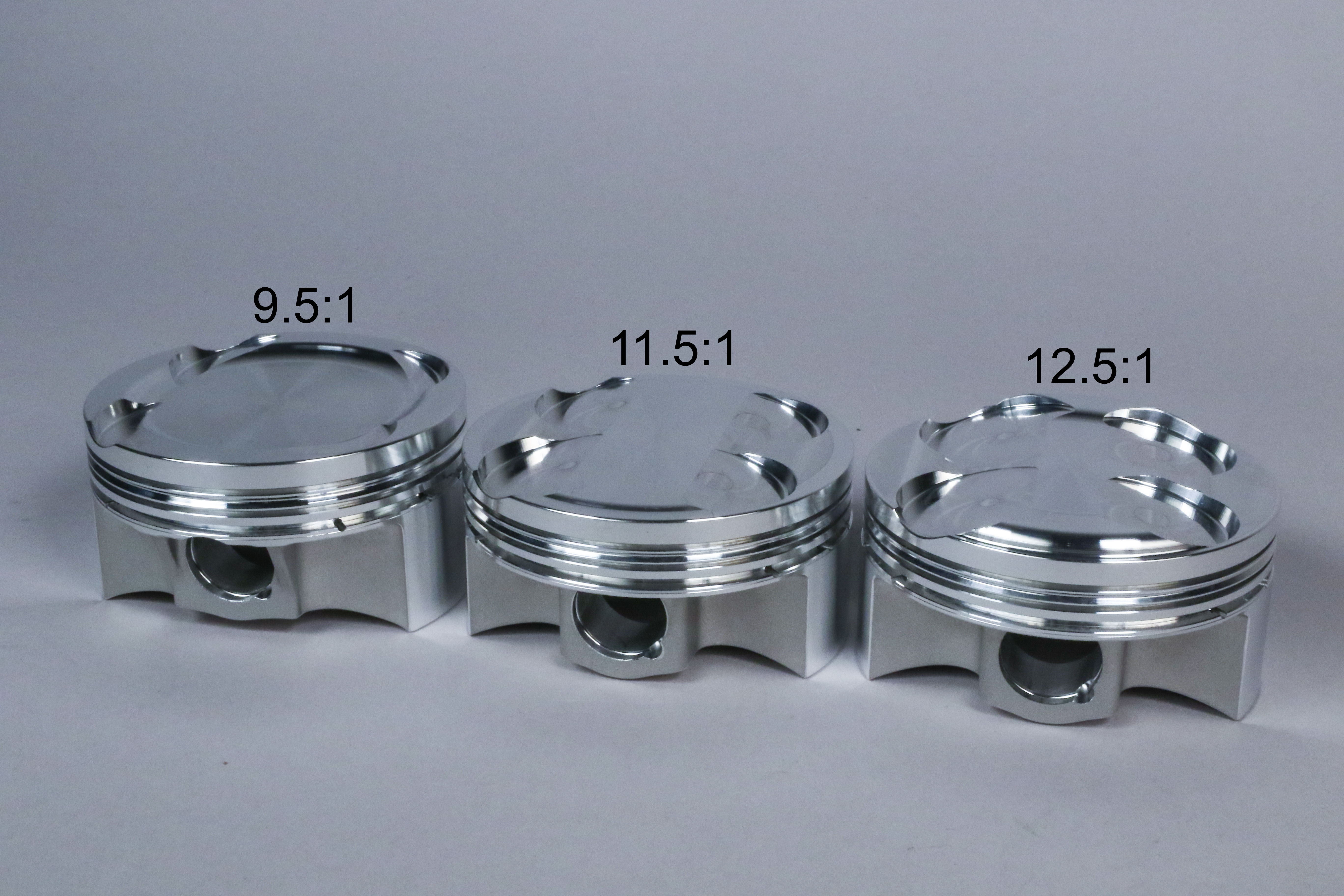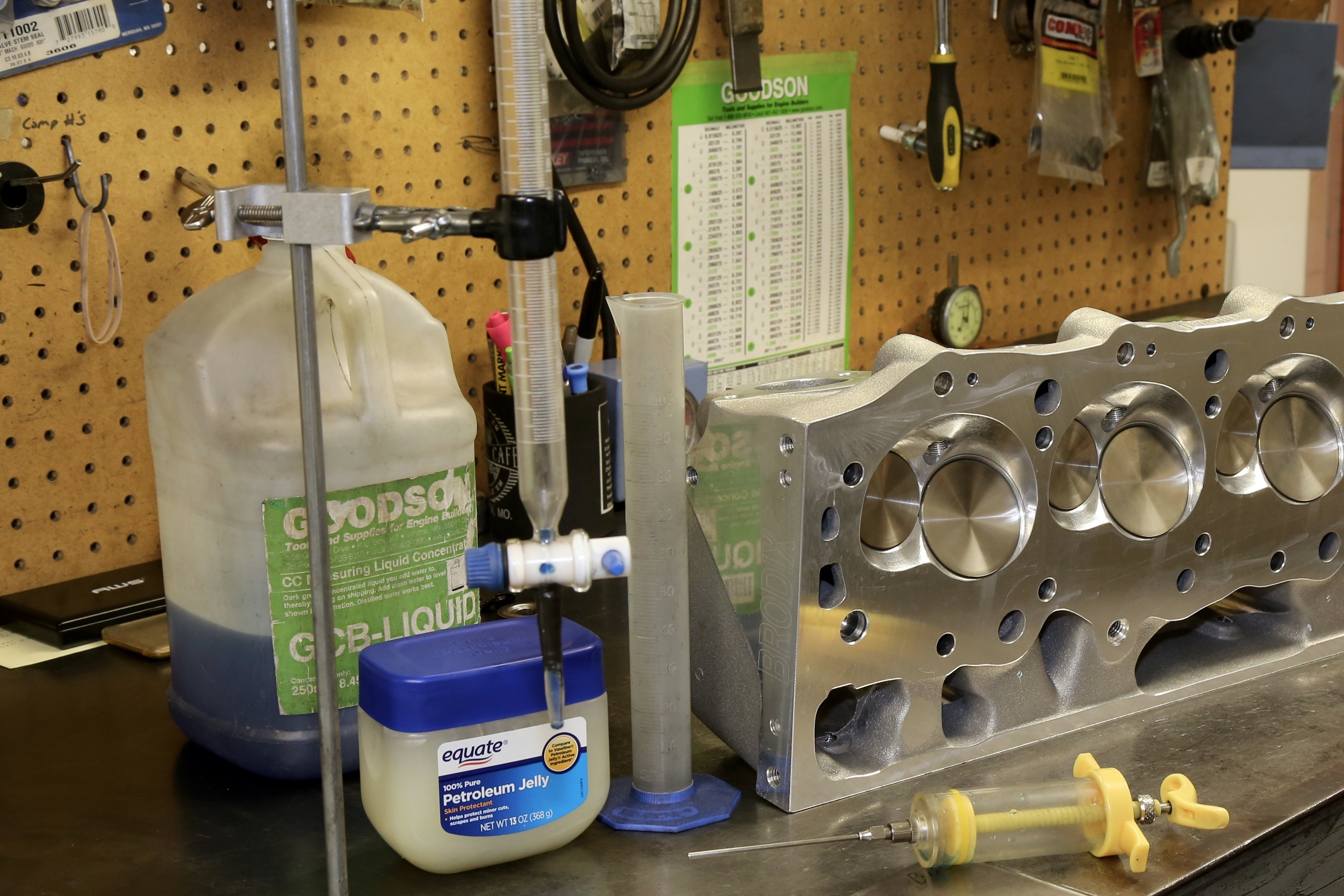The Grabowski Brothers are a force to be reckoned with on the race track and their Subaru-powered Class 5 car is making waves in the off-road racing community.
Neal Grabowski’s first foray into off-road motorsports wasn’t exactly conventional. “I was 18 at the time and driving a Camaro,” he explains. “The father of the girl I was dating at the time raced off-road, and we decided to go to the Fireworks 250 on the Fourth of July. I got that Camaro stuck three times that day – it was a great time!”
After the event was over, Neal called his brother and told him that they needed to get an off-road car. “Turns out he had been at the same race – he had gone to the event with some college buddies, and he’d been riding shotgun with one of his frat brothers because no one else was willing to ride with him,” Neal recalls. “That fraternity brother was [off-road racing champion] Troy Herbst.”

Herbst helped the Grabowski brothers find their first off-road machine, a ’68 Volkswagen Beetle set up for SCORE Class 5 racing events. “Basically a Baja Bug on steroids,” Neal says. “It had 2180 VW motor in it and a 091 Bus transmission. The sheet metal and pan were true Volkswagen stuff, but that was about it.”
As is often the case with a team’s first foray into a racing discipline, the Bug proved to be a crash course in race car building and prep. “I knew nothing about cars, and hadn’t really ever worked on them,” he admits. “So I learned on that car, and then I built a brand new Class 5 car.”

Despite the fact that their racing efforts were purely self-funded, the Grabowski brothers quickly became formidable competitors with their new, purpose-built machine. “We didn’t have any parental support on this – this was us working on the side to pay for racing, and we won a championship with it. I think in our last season with it there were seven races, and we won six of them.”
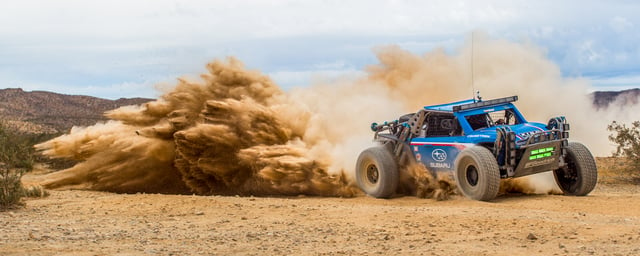 “When Crawford built the motor he told us that we weren’t talking about horsepower, we were talking about torque,” Neal recalls. “The agreement from the beginning was that we weren’t concerned with dyno numbers, it was about whether or not we were happy.”
“When Crawford built the motor he told us that we weren’t talking about horsepower, we were talking about torque,” Neal recalls. “The agreement from the beginning was that we weren’t concerned with dyno numbers, it was about whether or not we were happy.”But after a close call at the 2005 Baja 500, Neal says he decided to take a break from racing to reassess. “We were doing 125 mph on an open highway near the end of the race,” he says. “Out of nowhere the right rear tire blew out, and it sent the car sliding back and forth across the highway – if there was a car there, it could have killed someone. I had four little kids at home at the time, and I decided I wasn’t going to get back in a race car until my kids were old enough to get by without me.”
And at the same time, his kids were about ready to do some racing of their own. “They were getting old enough for Trophy Karts,” he says. “So we put the kids in some stadium cars so they could learn how to drive in a safe environment.” The apple didn’t fall far from the tree as it turns out, and the Grabowski kids went on to win four championships before the family decided to take another break from the demands of operating a competitive race team.
But by 2015 the siren song of the race track had once again become too loud to ignore, and the family started racing once again. “We had a car we had built for the kids that had been sitting in our garage for a while,” he says. “So we got to work bringing that car up to snuff. This is a development car – there’s nothing on this thing that’s designed just to ‘compete.’ It’s very different from what other teams are campaigning in the class, from the wheel we run to the size of the shocks and the weight of the car.”
Initially an air-cooled class catering to VW and Porsche-motivated machines, the Class 5 rule set has since changed. “For a while everyone was using the Type 4 motor, but parts are increasingly tough to get these days, and they’re very expensive when you can,” he notes. “Every time one of those motors blows up, it’s another twenty grand.” Accordingly, the Class 5 rule set was changed a few years ago to bring water-cooled engines into the mix.
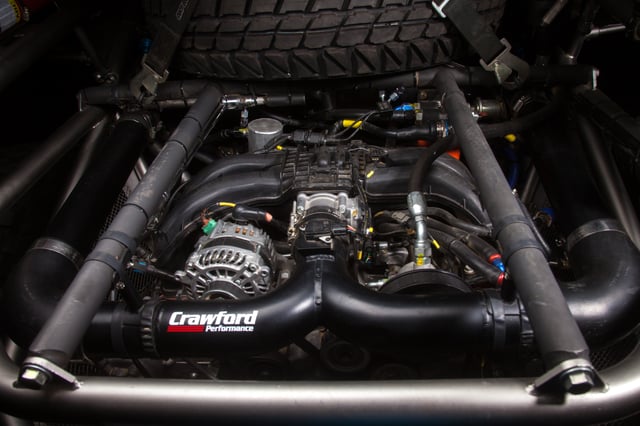
“We built this car a little heavier than we normally would because we knew our kids were going to be driving it and we were concerned about them being upside down on the race course and someone running into them – things like that,” Neal says. “So we put extra weight in the car for extra cushioning in case something really bad happened. But with the extra weight in the car we were running with the throttle to the floor all the time, and we lost four Type 4 motors because of that. That’s when we decided to do a Subaru engine.”
Grabowski got hooked up with Crawford Performance, one of the most respected Subaru engine builders in the business. “Quirt Crawford was really excited to take on the job – he said he’d never had a chance to do a naturally aspirated build before, as everyone normally runs these engines with turbos,” Neal says.
The team’s “Crosstrek” sports a full tube-frame chassis with a 105-inch wheelbase built by Desert Dynamics. Weighing in at 3,850 pounds race-ready, the Subaru gets its motivation from a 2.5-liter FB25 four-cylinder motor that’s outfitted with custom JE pistons, factory cylinder heads, a Davis step header, and a Motec engine controller. “It makes a hell of a lot of torque,” he notes.
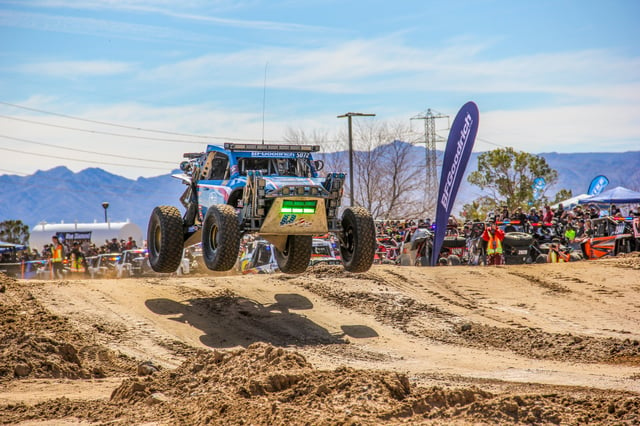
“We run a big 37-inch truck tire in the back, and it accelerates like a rocket ship. In this motor it’s all about the torque, and the piston is part of our secret recipe. Crawford worked with JE’s engineers to put together a custom piston, and we were happy with the piston on day one – the power was amazing. Every time we get a new set of pistons, we refine the set up for a little more power, a little more strength, and JE’s been very receptive to making those modifications.”
Developing the car has been a process, he admits. “There’s been some pain – stuff like trying to find a clutch that could handle the torque. Loading and unloading the tires like we do in the dirt can smoke a clutch rated for a thousand horsepower on the street. We also struggled for a while with this crazy fuel injection system we had on the car.” Despite the teething issues, the team earned four class wins between 2016 and 2018, and took 2nd place in class at the Baja 500 last year.
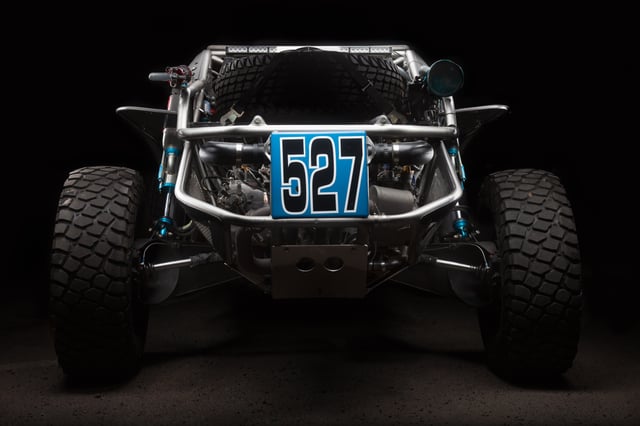
Grabowski Brothers Racing recently returned from the Mint 400, where they were running first overall before valvetrain issues forced them to retire from the race. While frustrating, Neal notes that the car is undeniably fast. “Wherever this car runs it doesn’t matter where it starts,” he says. “Give it 80 miles and it’s in first. I think we’ve only been passed once by a Class 5 car under power.”
And while the team continues to work on the Crosstrek’s reliability, they’ve also got another project in the hopper. “It’s a Class 1 unlimited car – a two-seat buggy with independent rear suspension,” he says. “There’s a 650 horsepower Chevy LSX engine in the rear with JE pistons , and it’s hooked up to a five-speed sequential gearbox. It’ll out-accelerate trophy trucks on the track.”
The team plans to debut the Class 1 car in 2019. “We’ve got maybe two or three months of development left, then we’ll have it out at the race track. We want it to be absolutely perfect, and we won’t run it until it is.”
